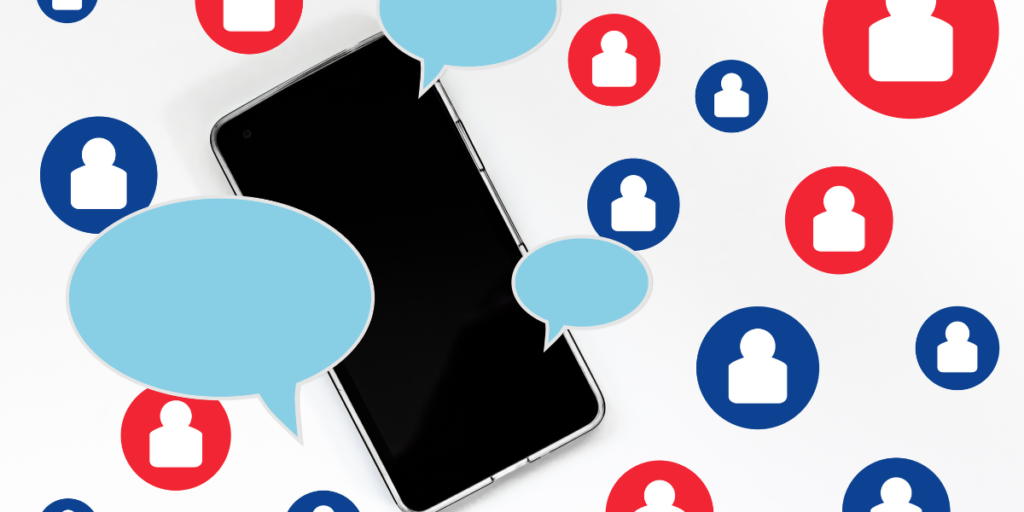In today’s fast-paced digital world, staying connected is more important than ever. Whether you’re juggling work responsibilities, coordinating with friends, or sharing precious moments with family, effective communication is key. Enter Google Messages for Web—your new best friend that transforms how you send SMS, MMS, and RCS messages right from the comfort of your computer! Imagine typing away on your keyboard instead of fumbling with your phone while trying to type out long texts or share photos. In this complete guide, we’ll take you through everything you need to know about mastering Google Messages for Web—from setup tips to hidden features that will elevate your messaging game. Get ready to unlock a whole new level of convenience and efficiency in your communications!
Introduction to Google Messages for Web
Imagine a world where you can seamlessly send and receive messages, not just from your phone but right from your computer. With Google Messages for Web, that dream is now a reality. This powerful tool allows users to stay connected without being tethered to their mobile devices. Whether you’re working at your desk or lounging on the couch, managing conversations has never been easier.
But what exactly is Google Messages? It’s more than just an app; it’s a robust messaging platform that supports SMS, MMS, and RCS—all accessible through your web browser. As we delve into this complete guide, you’ll discover how to set up Google Messages for Web effortlessly and unlock its full potential for communication. Ready to elevate your messaging game? Let’s dive in!
- What is Google Messages?
Google Messages is a versatile messaging app designed for Android devices. It’s not just about sending text; it supports SMS, MMS, and RCS protocols, making communication seamless.
With an intuitive interface, Google Messages allows users to connect with friends and family effortlessly. The app integrates features like chat bubbles and rich media sharing that enhance the messaging experience.
Security is also prioritized. End-to-end encryption ensures your conversations remain private when chatting through RCS. Plus, its search functionality lets you easily find past messages or media shared in chats.
The app’s compatibility extends beyond mobile devices, allowing users to interact via web browsers through messages.google.com/web. This feature makes it convenient to stay connected while working on a computer or laptop without needing your phone at hand.
- How does messaging on the web work?
Messaging on the web allows you to send and receive texts directly from your computer. It offers a seamless experience that syncs with your mobile device, ensuring you never miss a message.
When you use Google Messages for Web, everything operates through an internet connection. Your phone acts as a bridge between the web interface and your cellular network. This way, messages sent from your computer are routed through your phone.
To start using it, simply link the two devices by scanning a QR code displayed on your computer screen with the Google Messages app on your smartphone. Once connected, all conversations will appear in real time.
You can easily access SMS, MMS, and RCS messages without needing to pick up your phone constantly. It’s perfect for multitasking or when you’re working at a desk. The convenience of typing on a full keyboard elevates the messaging experience significantly.
Setting up Google Messages for Web
To get started with Google Messages for Web, you need to meet a few requirements. First, ensure you have an Android device with the latest version of the Google Messages app installed. You’ll also need a stable internet connection on both your phone and computer.
Once you’re set up, open messages.google.com/web in your browser. The screen will display a QR code that you’ll scan using your phone’s Messages app.
On your Android device, tap on the three dots in the upper right corner and select “Device pairing.” Here, choose “Scan QR code” and point your camera at the screen. This links your devices seamlessly.
After scanning, within moments you’ll see all your conversations populate on the web interface. You’re now ready to chat from anywhere!
- Requirements and compatibility
Before diving into Google Messages for Web, it’s essential to check your system compatibility. You’ll need a computer with an updated web browser. Chrome, Firefox, and Edge are great choices.
Your smartphone must run Android 5.0 or higher. The Google Messages app should also be installed on your device.
Additionally, make sure you have an active internet connection on both the phone and the computer. This allows seamless syncing between devices.
Lastly, verify that you’re signed in to the same Google account across all platforms if required by any additional features or settings. With these requirements met, you’re ready to explore messaging from your desktop effortlessly!
- Step-by-step guide to setting up
To set up Google Messages for Web, start by opening the app on your Android phone. Tap the three dots in the upper right corner to access settings.
Next, find “Messages for web” and select it. You’ll see a prompt to scan a QR code. Keep this window open because you will need it shortly.
Now, switch to your computer and navigate to messages.google.com/web. A QR code will appear on your screen.
Return to your phone and use the camera feature within Google Messages to scan the QR code displayed on your computer. This action links both devices seamlessly.
Once connected, you can view all of your conversations directly from your desktop browser. It’s that easy! Enjoy sending texts without ever reaching for your phone again.
Sending SMS, MMS, and RCS messages from your computer
Sending messages through Google Messages for Web is straightforward. You can easily communicate via SMS, MMS, and RCS directly from your computer.
SMS is the traditional text messaging service. It works well for short texts without multimedia elements. Just type out your message and hit send.
MMS allows you to share images, videos, or audio clips alongside your text. When composing a message in the web interface, simply click on the attachment icon to add media files before sending.
RCS takes things up a notch with richer features like read receipts and typing indicators. If both you and your recipient have compatible devices and apps, it’s an enjoyable way to interact.
Composing messages is user-friendly—just click on “New Message” to start chatting. Whether it’s quick notes or sharing memories through photos, everything feels intuitive while using this platform.
- Differences between SMS, MMS, and RCS
SMS, or Short Message Service, is the most basic form of text messaging. It allows users to send short texts up to 160 characters. This simplicity makes it quick and accessible but limits creativity.
MMS stands for Multimedia Messaging Service. Unlike SMS, MMS supports images, videos, and audio files alongside text messages. It’s perfect for sending media-rich content like photos from a vacation or a funny video clip.
RCS, or Rich Communication Services, takes messaging further by introducing features akin to those found in popular messaging apps. It supports high-resolution images and read receipts while enabling real-time typing indicators. RCS enhances group chats with better organization and more interactive options.
Each type has its own strengths depending on user needs—whether you prefer straightforward texting or want a richer communication experience filled with multimedia elements.
- How to compose and send messages on the web interface
Composing and sending messages on the Google Messages web interface is a breeze. Once you’ve set everything up, you’ll find a user-friendly layout that mimics your mobile experience.
To start, click on the message icon at the top left corner of your screen. This opens a new chat window where you can enter the recipient’s phone number or select from recent contacts. The text box is easy to locate; just type in your message as you normally would.
Adding flair? Simply click on the emoji icon to insert fun emojis into your conversation. If you’re looking to share photos or files, drag and drop them directly into the chat window or use the attachment clip for more options.
Hit send with a simple press of Enter, and your message is off! Enjoy seamless communication right from your computer without missing a beat.
- Adding attachments and emojis
Adding attachments and emojis to your messages can greatly enhance the way you communicate. Google Messages for Web makes this process easy and intuitive.
To attach a file, look for the paperclip icon in the chat interface. Clicking it allows you to browse your computer for images, documents, or even audio files. This feature is perfect for sharing photos from recent adventures or important work documents.
Emojis add personality to your conversations. You’ll find an emoji icon right next to the text input area. A simple click opens up a world of expressive options—from smiley faces to animals and everything in between.
Navigating through these features is seamless. Whether you’re sending a quick laugh or an essential document, every attachment helps convey your message more effectively.
Advanced features of Google Messages for Web
Google Messages for Web is packed with advanced features that enhance your messaging experience. One standout capability is group chats, allowing you to connect with multiple contacts simultaneously. This makes coordinating plans or sharing updates effortless.
You can also customize chat settings to suit your preferences. Mute notifications for specific conversations or change themes to make the interface more visually appealing.
Another great feature is Smart Reply, which suggests quick responses based on the context of a conversation. It saves time and keeps interactions flowing smoothly. Additionally, AI-driven enhancements improve message predictions and typing efficiency, making communication even more seamless.
Exploring these advanced functionalities will not only elevate your messaging game but also streamline how you connect with friends, family, or colleagues across various platforms.
- Group chats
Group chats in Google Messages for Web offer a great way to stay connected with multiple contacts at once. Whether you’re planning an event or just catching up, creating a group chat is simple and efficient.
To start a group chat, click on the “Start Chat” icon and select multiple recipients from your contact list. You can easily add new participants later by inviting them directly into the conversation.
Once your group is set up, everyone can contribute to discussions seamlessly. It’s easy to share updates, photos, and links all in one place. The interface makes it intuitive to see who has read your messages too.
Don’t forget about customization options! You can assign unique names and even emojis for each chat group, making conversations more personal and fun.
- Customizing chat settings
Customizing chat settings in Google Messages for Web can greatly enhance your messaging experience. You have the ability to adjust notifications, themes, and display preferences according to your liking.
To start, navigate to the settings icon within the web interface. Here, you’ll find options to enable or mute notifications based on your preference. This feature is particularly useful if you want peace while working.
Next, consider changing the theme. Whether you prefer a light or dark mode, customizing this visual aspect makes chatting more enjoyable.
Don’t forget about managing message previews as well. You can choose whether you’d like message snippets shown in desktop notifications or keep them private.
Each small adjustment contributes significantly to how seamless and personal your communication feels from your computer.
- Using Smart Reply and other AI features
Google Messages for Web comes packed with intelligent features that enhance your messaging experience. One standout is Smart Reply, which suggests quick responses based on the context of received messages. This saves time and keeps conversations flowing effortlessly.
When you receive a message, look for suggested replies right above the text input area. Just click one to send it instantly, or tweak it as needed before hitting send.
Additionally, Google leverages machine learning to improve these suggestions over time. The more you use it, the smarter and more personalized your replies become.
You can also enjoy other AI-driven functionalities like predictive text while composing messages. This feature anticipates what you’re about to type, allowing for faster communication without sacrificing clarity or style. Engaging in chats has never been easier!
Troubleshooting common issues
Connectivity problems can be frustrating. If you find that Google Messages for Web isn’t connecting, check your internet connection first. A stable Wi-Fi or mobile data is crucial for seamless messaging.
Next, ensure your phone and computer are both connected to the same network. Sometimes, a simple refresh of the web browser helps resolve minor glitches.
Syncing issues may also arise between your phone app and the web version. Make sure that notifications are enabled on both devices. Restarting either device can sometimes fix these syncing hiccups too.
If messages aren’t appearing in real-time, clearing your browser’s cache might do the trick. This action often restores functionality without needing any complicated fixes.
Don’t hesitate to log out of Google Messages on the web and log back in if other solutions fail. It’s a quick step that can refresh your session effectively.
- Connectivity problems
Connectivity issues can be frustrating when using Google Messages for Web. If your web app won’t sync, the first step is to check your internet connection. A weak or unstable network can prevent messages from syncing properly.
Another common problem arises if your phone loses its data connection. Since Google Messages relies on your smartphone’s connectivity, ensure that it’s online and connected to either Wi-Fi or mobile data.
Sometimes, browser settings may interfere with functionality. Clear cache and cookies regularly to help improve performance and resolve any glitches you might encounter while sending messages.
Lastly, restarting both the web browser and your smartphone often resolves temporary hiccups in connectivity. Simple adjustments like these can make a significant difference in ensuring smooth communication through Google Messages for Web.
- Syncing issues with phone app
Syncing issues can be frustrating, especially when you rely on Google Messages for seamless communication. If your messages aren’t syncing properly between your phone and the web interface, it may disrupt your workflow.
First, ensure that both devices are connected to stable Wi-Fi or cellular data. A weak connection can hinder the synchronization process significantly.
Sometimes, logging out and back into your account can resolve minor glitches. This refreshes the connection between your devices.
Also, keep an eye on app updates. Outdated versions of Google Messages might cause compatibility issues with the web service.
If problems persist, clearing cache from both the browser and app could help eliminate any corrupted data causing sync failures. Remember to check notification settings too; they can impact how messages are sent and received across platforms.
Tips
When it comes to mastering messages.google.com/web, a few tips can enhance your experience. First, ensure that both your computer and mobile device are connected to the internet. A stable connection helps prevent any disruptions during messaging.
Next, familiarize yourself with keyboard shortcuts available on the web interface. These can significantly speed up your workflow while sending messages. For example, using “Ctrl + N” allows you to start a new conversation quickly.
Make use of notifications as well. Enabling them ensures you never miss an important message when working on other tasks.
Don’t forget about privacy settings too! Adjust these in the app on your phone for better control over who can reach you or see when you’ve read their messages.
Lastly, regularly update both the Google Messages app and your browser for optimal performance and access to new features. With these tips in hand, you’ll be well-equipped to navigate Google Messages for Web like a pro!






